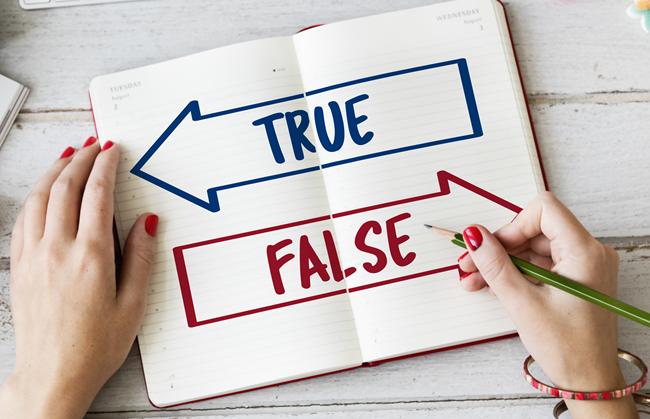Recently, all the major media reported that the HPV vaccine was working. By their reports, the research showed a 56% reduction in HPV rates for vaccinated girls aged 14-19.
- HPV Vaccine Working Despite Limited Use – ABC News
- HPV Vaccine is Working. Again. – Slate
- It works: HPV vaccine reduces infection by 56% CDC Says – LA Times
- NewsNation: Report HPV vaccine working better than expected – NBC News
- CDC: HPV vaccine reduced disease rates in teen girls by 56% – CBS News
Even a decidedly feminist blog jumped on the bandwagon:
- The HPV Vaccine is Working: Rates have Dropped 50% since Introduced – RH Reality Check
Perhaps one of the only reports to question the validity of these findings comes from an oncology blog for nurses. Assessing the Overall Impact of the HPV Vaccine – well worth the read. Leslie Botha from Holy Hormones Journal adds additional points of contention worthy of consideration. What the rest of the media failed to recognize and repeatedly fails to recognize either by want or by ignorance is that press releases are not often factually correct; something we write about regularly for Gardasil (here, here) and other medications or research (here and here). If a news or media organization is to report on medical and scientific research, they must be prepared to read and critically evaluate the actual research. Otherwise, they ought to label these reports what they are – advertisements. Here is my take on the latest HPV research.
Behind the PR: Understanding the Research
Every couple years the Centers for Disease Control (CDC) and the National Center for Health Statistics (NCHS) sponsor what are called NHANES studies (National Health and Nutrition Examination Studies). These are health questionnaires sent out to a few thousand individuals deemed to be a representative portion of the population. Depending on the topic of study there are also laboratory based tests and/or in person followups at mobile examination centers (MEC). The study bandied about by the press, was published in the Journal of Infectious Disease (JID) by Markowitz et al., 2013. It compared NHANES data collected from 2003-2006, the pre-vaccine era and from 2007-2010, the post-vaccine era. An earlier study, also published in JID, but authored by Dunn et al. 2011, looked at the NHANES data from 2003-2006 and served as the foundation for Markowitz’s pre-vaccine/post-vaccine HPV analysis.
Background: HPV Prevalence and the Reported Reduction
Even a cursory reading of the Markowitz report – the report on which the PR suggesting HPV success is based – immediately reveals problems. A deeper dive that includes the earlier JID study, the foundational pre-vaccine data to which the post-vaccine data is compared, demonstrates a statistical sloppiness that is difficult to attribute to ignorance. Numbers are missing, incorrect and misleading.
At the most basic level the data presented about the HPV vaccine’s effectiveness in the reported and marketed extensively by every major and media company are overblown and just a little bit hinky. While it is true that the researchers report a 56% reduction in HPV rates in girls ages 14-19, that represents only a modest decline in the combined HPV rates (11.5% to 5.1%) tested. What the PR did not mention:
- Other age groups saw an increase in HPV rates between the pre-vaccine era and post-vaccine era, suggesting that not vaccinating may be better
- To arrive at this reported 56% reduction for the 14-19 year olds, the researchers had to combine the prevalence rates for each HPV strain tested (not all girls tested positive for all strains), then weight the results and transform – normalize the data to account missing data points and reign in the confidence intervals. The pre-vaccine prevalence rate of 11.5% was arrived at by summing the prevalence rate for each vaccine strain (HPV 6 was 5.4%, HPV 11 was 1%, HPV 16 was 6% and HPV 18 was 1.8%), but we would only know this if we pulled the 2011 study from whence the 11.5% figure came. Markowitz et al. did not annotate this figure. Not all girls had all strains and only HPV 16 and 18 are considered oncogenetic – potentially cancer causing. Without noting how the 11.5% figure was arrived at and which strains changed from pre- to post-vaccine era, there is no way to determine whether the reduction from 11.5% to 5.1% came from the oncogenic or non-oncogenic strains. Nor is there any way to tell if the prevalence of certain strains increased over time instead of decreased. What if the observed reduction from 11.5% to 5.2% was largely based on HPV 6 – which initiates no more than genital warts?
- From the total sample of 1363 pre-vaccine era girls and 740 post-vaccine era girls considered, girls from both time periods who were not sexually active and had no record of HPV or vaccine data were included in the original analysis reported in the PR. There was no stratification by these variables in the 56% improvement rate reported.
- In secondary analysis, when HPV status was evaluated, only a very small sample size of sexually active girls in this age group (111 in the pre-vaccine data and 239 from the post-vaccine data, 8 girls from the post-vaccine sample had no HPV records) were included. These stratified data show that the rate of HPV was lower in non-vaccinated girls at 38.6% compared to 50% in vaccinated girls. So much for the most basic measure of efficacy.
- The ages of sexually active versus non-sexually active by vaccine status were not given and thus, there is no way to determine whether vaccinating younger, non-sexually active girls has any protective capacity years later when the actual risk for HPV presents.
- The error rates for some of the reported statistics, hailed as supporting the vaccines were over 30% (how much over, we do not know). Regardless, a >30% error rate is not a acceptable.
Read and Evaluate the Primary Research
Unless and until we get accurate and unbiased data from a large sample, that can be evaluated and verified independently, there is no way to tell if the risks of adverse events associated with this vaccine are reasonable and outweighed by the benefits of preventing cancer. Currently, data collected from the Vaccine Adverse events registry (VAERS) indicates a serious adverse event rate 4.3 per 100,000 doses of Gardasil. (Serious adverse events are those that cause death or are life threatening, require hospitalization, cause persistent disability or incapacity and/or require medical treatment to prevent permanent impairment or damage). This is compared to a risk of cervical cancer of 7.9 per 100,000 and death from cervical cancer at 2.4 per 100,0000 cases in the US. Considering VAERS contains only 1-10% of the total adverse events, the probability increased adverse events is high, so determining the benefits and the efficacy of this vaccine are important.
Who to Trust?
The more the vaccine industry, the CDC, the FDA and other agencies continue to promote truly spurious studies as relevant and proof-positive that a particular vaccine or medication is safe and effective, credibility is lost. Without an effective counterbalance to the specious claims made by industry, consumers are left fending for themselves. What is perhaps the most dangerous result of this constant barrage of medical marketing and PR is that individuals who may truly benefit from certain vaccines or medications will avoid taking them because of the loss of trust. For the time being, you must pull the research, read and evaluate the studies yourself.
We Need Your Help
More people than ever are reading Hormones Matter, a testament to the need for independent voices in health and medicine. We are not funded and accept limited advertising. Unlike many health sites, we don’t force you to purchase a subscription. We believe health information should be open to all. If you read Hormones Matter, like it, please help support it. Contribute now.







